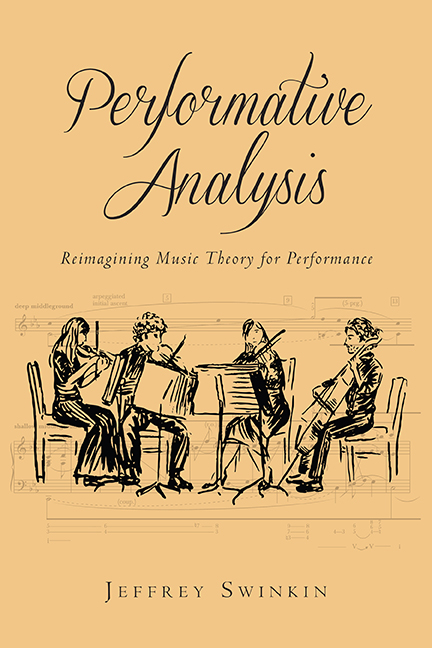4 - An Analytical Dialogue: Beethoven, String Quartet in C Minor, Op. 18, No. 4, First Movement
Published online by Cambridge University Press: 09 June 2021
Summary
The following scenario, whose setting is a graduate seminar/practicum in performance/ analysis, is not intended to depict realistically the typical responses of seminarians, nor, for that matter, to be a pedagogical model or ideal. I employ this Socratic medium in order to transmit my performative analysis of this piece in a somewhat performative way, and to convey the analysis more fluidly than standard academic discourse usually allows. Since I am not a string player, my avatar in this dialogue, the theory teacher/chamber-music coach, will dispense advice on performance that is mostly general rather than highly string-idiomatic.
Session 1: Exposition, Primary Theme
Teacher (T): Welcome to week 4 of our performance/analysis seminar! Over the next several sessions, I will be coaching you string-quartet players on the first movement of Beethoven's magnificent C-minor String Quartet, op. 18. I have asked you to learn the notes but to hold off on settling on particular interpretive nuances, since our goal, remember, is to explore how music analysis can awaken us to new possibilities. We don't want our physical habits, in which status quo modes of playing are often ingrained, to determine or unduly constrain our interpretation. We will therefore adopt a proactive stance, for each section discussing analytical points first. I hope these will generate interesting and even novel interpretive ideas, which we will then put into practice. But first, to orient our work on this piece, perhaps we should review some of the general principles regarding analysis and performance that we have been discussing over the last few weeks. Who can get us started?
After a long pause …
Cellist (C): Well, a score includes pitches, rhythms, and various expressive markings. But we all know that music is about so much more than quarter notes and crescendi! These symbols may indicate what to play and something about how to play it, but they also imply certain things about musical structure. Isn't that right? And to get across ideas about musical structure, we need to use lots of variety in dynamic, tempo, and articulation.
T: Nicely put. But I’m concerned about that last sentence: by “get across ideas,” do you mean we try to communicate analytical ideas in a performance? Is that even possible?
- Type
- Chapter
- Information
- Performative AnalysisReimagining Music Theory for Performance, pp. 96 - 166Publisher: Boydell & BrewerPrint publication year: 2017



